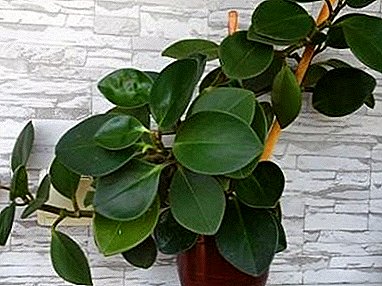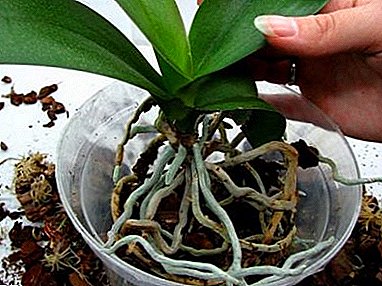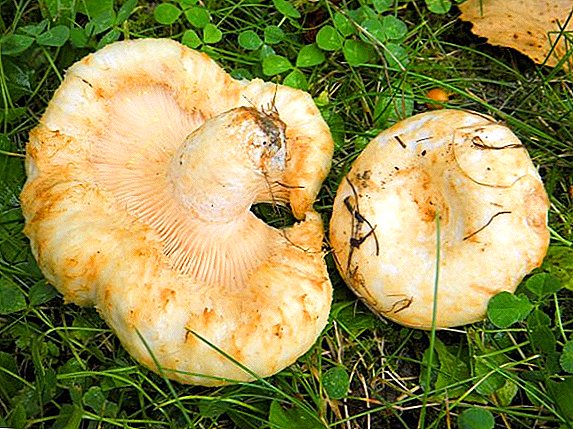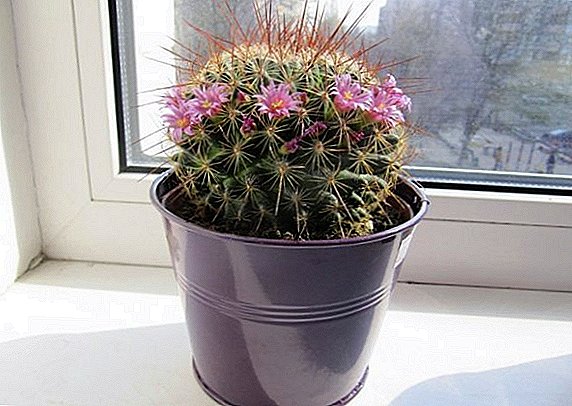
A few decades ago, the ficus was so popular that it could be found literally in every Soviet apartment.
Over time, he lost his popularity, but now once again gaining the sympathies of lovers of indoor plants.
General description
One of the most unusual species is Ficus Retuz. (Ficus retusa) - A plant that has a dense smooth trunk, extensive branched branches with slightly elongated, bright green large leaves.
This type of ficus is mainly grown as bonsai, which distinguishes it from other varieties of ficus.
The native land of this plant is considered to be the tropics of Asia, where this evergreen tree in nature reaches up to twenty meters in height.
Home care
Ficus retuza pretty unpretentious care, therefore, to grow it under the force even to a beginner florist - amateur.
However, in order for the ficus to grow large, you need to be patient, because this species grows very slowly.
Meanwhile, an adult plant will be an excellent and original decoration of any interior, for many years delighting its owner with succulent green leaves.
Important! Ficus juice is poisonous and may, if it comes into contact with the skin, cause redness or irritation.When caring for the plant should be careful and carry out all manipulations with rubber gloves.
Care after purchase
 After you brought the ficus home, you should as soon as possible find for him a suitable "place of residence", where he will reside.
After you brought the ficus home, you should as soon as possible find for him a suitable "place of residence", where he will reside.
Do not place the plant where the air is too dry, near the batteries and in the scorching sun. It is also not necessary to place it where there are drafts.
From the very first day, the ficus should be irrigated once or twice daily.
The next day, you need to check whether the soil is sufficiently wet: if the earth is dry at a depth of ten centimeters - the plant should be watered.
Do not worry if in the first few days leaves begin to fall from the ficus - in this way, he reacts to his new "home", and very soon, with careful care, he will get used to it.
Watering
On summer days, Ficus needs regular watering - the soil must be constantly maintained in a moderately humid state.
In winter, the plant should be watered less abundantly.
In general, the tree responds normally to a short-term lack of moisture, but during active growth it is unacceptable to dry the ground, as well as water stagnation in the pot.
The crown should be sprayed regularly, making sure that as little as possible falls on the water trunk.
Important! Spraying the plant, it is best to use boiled water to avoid the appearance of white bloom on the leaves. Water should not be cold.
Crown formation
At first, the young plant grows erratically, but from the second year it is necessary to begin the formation of the crown and trim the trunk to the desired height.
 If shoots are formed weakly, the central shoot should be tied to a support.
If shoots are formed weakly, the central shoot should be tied to a support.
Then it is necessary to constantly shorten the young processes by one or two leaf buds.
In winter, when the plant is at rest, you should cut the branches, which are woody.
Mostly in spring and summertime, it is worth cutting new young leaves and shoots in order to properly regulate leaf growth.
The inner part of the crown is also subject to periodic thinning.
The upper branches are shortened - only three or four leaves are left, which contributes to the development of the lower branches.
If the leaves of ficus began to turn yellow, they should be removed. The barrel, which is intensely affected by moisture, may at its base acquire a green hue. Periodically it needs to be cleaned with a non-rigid brush.
The soil
For Ficus Retuz, it is advisable to use ready-made soil for ficuses or palms.
You can also independently prepare the soil by mixing in equal quantities sand, humus and clay granulate.
Fertilizing the plant is made with a special fertilizer for bonsai or universal fertilizer about two to four weeks in the winter and every week from March to September.
Transfer
After three years, the first replanting of a plant is usually performed. Young plants are usually transplanted once a year, in early March, completely replacing the soil.
More mature plants are transplanted once every two years, while carefully removing the tiny roots, which are a tangled ball at the end of the rhizome. Before the new planting, a layer of drainage must be placed in the pot.
Breeding
Ficus breeding is carried out in the spring. This procedure is quite simple:
- you must select a ripe shoot and cut off its upper part;
- place the selected cutting in a container of water;
- after the appearance of the roots (usually after a couple of weeks), the process is planted in the ground.
Temperature
Ficus Retuz pretty comfortable at 15-25º C. It can be in the apartment for a long time, and in summer, when the temperature outside rises above fifteen degrees, the plant can be safely carried out to the open air.
A photo
In the photo ficus "Retuz": 




Benefit and harm
Due to its unusual form, Ficus Retuz will become an ornament and a highlight of any interior, not only in an apartment or a house, but also in an office. In addition, it perfectly humidifies the air, saturates the room with oxygen and even has bactericidal properties.
If you take care and make sure that the juice of this plant does not get on the skin (due to the possibility of causing allergic reactions), this plant does not bear any harm.
But for safety, it is better to place a ficus pot in an inaccessible area for small children.
Diseases and pests
Caring for a ficus is not difficult, but in order for the plant to be healthy and delight you with its succulent green leaves, you need to take into account a number of points:

- too much watering leads to decay on the roots and the occurrence of dusky specks on the leaves;
- watering in small quantities can weaken the plant and cause the leaves to drop;
- dropping leaves can also occur due to drafts and strong temperature fluctuations;
- insufficient moisture can lead to leaf fall and spider mite infection.
The main pests of the ficus Retuz are the white fly and various types of organisms sucking the juice.
In order to prevent their occurrence and reproduction, it is necessary to constantly monitor the leaves on the reverse side and eliminate pests that did not have time to develop.
But the most dangerous disease of this plant is anthracnose, which by mistake can be confused with burns appearing on the leaves from the direct rays of the sun.
Years later, the ficus reappeared in our homes. Due to his unpretentiousness and ease of care, he became the favorite of many gardeners.
Ficus RetuzPerhaps one of the most unusual species of this plant, able to "revive" any room and bring to it an atmosphere of lightness and ease.












